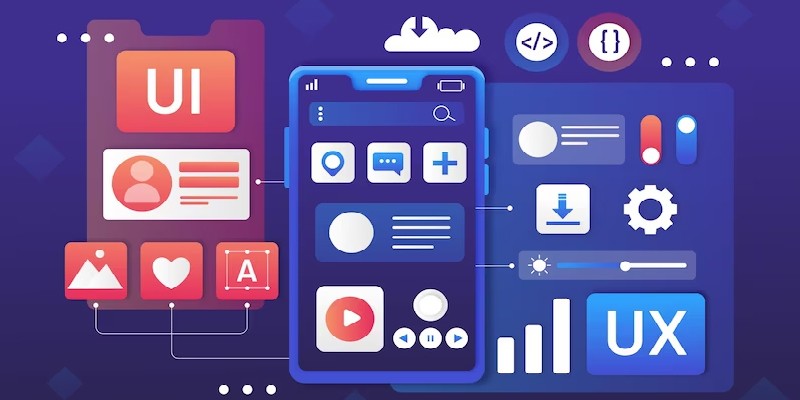- AI

Artificial Intelligence

Smart Products & Services
We follow Smart Products & Services

Intelligent Business Functions & Processes
We follow Intelligent Business Functions & Processes

Robotic Process Automation
We follow Robotic Process Automation

Personalized
healthcareWe follow Personalized healthcare

Identifying at-risk patients
We follow Identifying at-risk patients

Optimized routing and scheduling
We follow Optimized routing and scheduling
- ML

Machine Learning

Predictive
AnalyticsWe follow Predictive Analytics

Service Personalization
We follow Service Personalization

NLP
We follow NLP (Natural Language Processing)

Stock Market Forecasting
We follow Stock Market Forecasting

Fraud Prevention
We follow Fraud Prevention

Recommender engines
We follow Recommender engines
- blockchain
- IOT

Internet of Things
- AR
- Business Solutions

Business Solution

Business Performance Management
We follow Business Performance Management

Decision Making & Big Data Analytics
We follow Decision Making & Big Data Analytics

Enterprise Data Management
We follow Enterprise Data Management
- Apps

Apps

Native Apps
We follow Native Apps

Cross Platform Apps
We follow Cross Platform Apps

Web Apps
We follow Web Apps

Hybrid Apps
We follow Hybrid Apps

Cloud Native Apps
We follow Cloud Native Apps
- Lab

Craft an Efficient Software Development Workflow: A Blueprint for Success
A software development workflow is one of the most vital parts of any software development job. It has the same effect on how well the team works, how well the job turns out, and how quickly it grows.
Once you properly optimise it, you can lower development costs, divide resources well, make the team more productive, and much more. So, monitoring and improving the software development processes for app building is essential.
This blog from the top software services company and best software house in the UK will look at the parts of a good software development process and discuss how to improve it.
What Are The Parts Of Software Development Workflows?
A workflow that links the steps of the Software Development Life Cycle (SDLC) makes it easier for software workers to create apps.
A software development workflow is a cyclical process that sets out what tasks are vital at each stage and suggests future product development steps. When a software development team has a good strategy, it can do the following:
- See the larger view of the project;
- Clearly describe each team member’s duties;
- Recognise how their work contributes to the project as a whole;
- Anticipate any bottlenecks;
- Prevent and solve any problems that may come up during app development;
- Allocate resources more evenly; and
- Enhance their performance on the current project and future app-building projects.
Elements Of The Software Development Workflow

There are no steps in a software development workflow that stay the same. Based on how they are put together, there are usually between 5 and 7 parts. We will look at the five-step process of making software. It doesn’t follow that a growth plan with 7 steps is better than one with 5. Using a 5-step method, software writers can make high-quality software with the least time and money.
Planning and Taking Stock

During this stage, the software development team figures out the technical and business needs of the project.
- Product requirements: The software development team sets the parameters of the product, such as its architecture, tech stack, and the features, functionalities, and services that need to be put into the application.
- Business requirements: It includes how the client wants the finished product to look, its goals and objectives if the app needs to follow any exceptional branding standards, and more.
- The project requirements: These include the team member’s roles in the software development life cycle (SDLC), the project timeline, the distribution of resources, possible risks and problems, and solutions to these problems.
- Communication: At this time, there is a lot of communication between the project managers, business analysts, stakeholders, and the development team. You should make a thorough project plan and clear documentation during the planning and analysis step.
Project documents can have requirements, user scenarios, user stories, visual application design, and more. In the meantime, the project plan needs an overview of the development process and schedules, goals, results, and deliverables.
UI/UX Design

At this stage, UI/UX designers make the part of the proposed solution that looks good. They make wireframes and prototypes to test the app’s usefulness and make any necessary changes. UI/UX developers often have to change the application interfaces based on what their customers tell them to do so that the finished product matches the client’s corporate identity.
During the UI/UX process, there are a lot of tests and changes. Effective UI/UX design makes it possible to create user experiences that are always easy to use and fit the user’s needs. It also gets rid of any problems that the user might have.
Coding And Making Things
At this point, software workers start the process of making a product. How to produce software significantly affects what software workers do.
There are many ways to make software, but the most popular ones are Waterfall and Agile. You can use the Waterfall to create specialised software for industries with clear and set project needs.
For example, software for the flight and medical industries usually uses Waterfall. You can use Agile to make software for your different business areas when the end user’s needs significantly affect the development process. Using Agile lets software engineers quickly adjust to changing conditions, add or remove features, and change the parts of the finished product.
Testing
How you can perform the testing will depend significantly on your method. According to the agile methodology, you can use testing and code review at the end of each new development cycle. In the Waterfall method, the testing step comes after the software development part. But the Quality Assurance (QA) staff must thoroughly test the product before putting it on the market.
A lot of the time, businesses give the finished product to a small group of beta users. Beta testers are real people who buy and try the product first. If they find any problems, they let the company know. During this time, the software company uses several tools to watch and examine how customers use the finished digital product.
Testing can take a significant amount of time, mainly if the answer has many complicated parts. It is still an essential part of the SDLC process. Software with poor testing could hurt a client’s brand and reduce its return on investment by a significant amount.
Implementation and Maintenance

Once you build and test the item, the public can view it. Many companies use a variety of solutions (Continuous Integration/Continuous Deployment (CI/CD) Pipelines, Containerisation, and Orchestration, Infrastructure as Code (IaC), and Version Control Systems) to automate this process and ensure a continuous deployment model.
Even though the implementation step of a software development project is often thought to be the last, the SDLC process continues. Software developers should keep the answer they create up-to-date, ensure it meets customer needs, and ensure there is little downtime after they give the finished product to end customers. They try their digital solutions to ensure everything operates as it should.
Approach the best software house in the UK to boost your business. Our top-rated software house specialises in web apps, mobile apps, and custom software development. Unlock your company’s total power with today’s best software, mobile and web app solution provider!
How To Improve The Flow Of Your Software Development?
There are many ways for a company to improve its SDLC processes. They can get many of them by working on many software development jobs. After carefully thinking about our many years of professional experience in the software development business worldwide, we came up with the best practises for the software development process. Let’s look at them more closely.
Focus More On Good Code Than On Good Documentation
Developing good software requires, without a doubt, well-defined methods for product development. But more often than not, the time it takes to get an application to market is much more important than how well you document it. You must show your product to customers immediately and ensure it attracts potential users well.
Software workers should only waste time, money, and resources by writing a little documentation.
Build a minimum viable product (MVP) and add more product-testing tasks like building the core functionality to the development process, Conduct Early User Testing, Iterative Development, and Feedback Integration. Have frequent code-review meetings, follow coding standards, and have code-review sessions regularly.
Choose Your Tools For Project Management Carefully

Proper project management tools are as important as picking the right technology stack for the solution. Even though there are a lot of tools in the market, project managers choose the ones that work best for the development team and use them on every project. Think about this:
- GitHub is a prevalent Version control system (VCS) among software engineers worldwide. It lets you store and share software versions, review code quickly, track how code has changed over time, and do much more.
- Redmine is a great project management tool for big and small software development tasks. Redmine lets you handle bugs, make roadmaps and mark significant milestones, use team charts, and do many other things.
- Jira is a popular tool that you can use to manage Agile projects and keep track of bugs. You can also use it to track code bugs, handle software testing processes, etc.
Ensure Clear Communication And Openness
For software development to go well, there must be a lot of team involvement, regular discussion about project updates, and an excellent way to inform clients about these changes quickly. Teams can work better together, make sure everyone understands, and ensure the project succeeds by emphasising openness and good communication practises.
Hold Meetings To Look Back On Each Job After It’s Done

After you release software, people often get together for a “retrospective meeting.” It lets team members evaluate and improve how well their team is doing. The people on a team have to answer several questions, such as:
- What have they all done together?
- What were the most significant obstacles the team had to negotiate with?
Conclusion
The software development cycle must be a part of any process for making apps or software. Once you properly optimise it, it lets your teams make clear decisions about who will do what on the project, divide resources evenly, and avoid significant problems. Because of this, companies with a good understanding of a wide range of custom software development projects can enhance their software production workflows.
As a top mobile and web app solution provider andthe best software house in the UK, our teams have decades of experience in custom software and mobile app development for a wide range of businesses. We develop efficient and organised ways to build software and mobile apps for each project. If you enjoy constructing your own software, contact us.



















































Leave a Reply